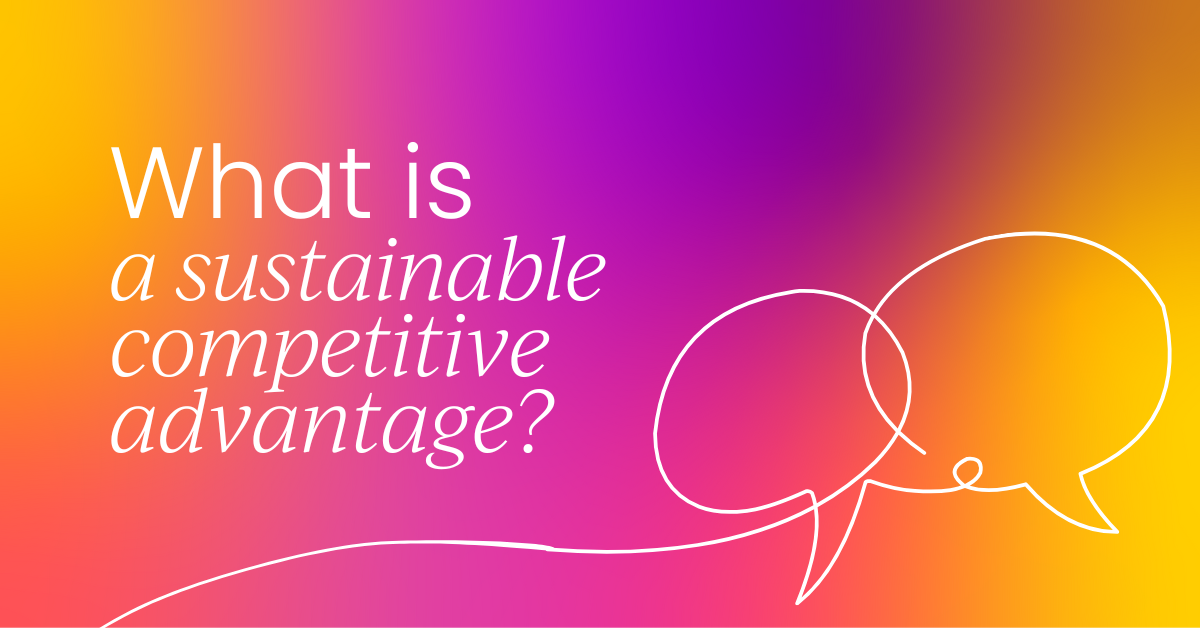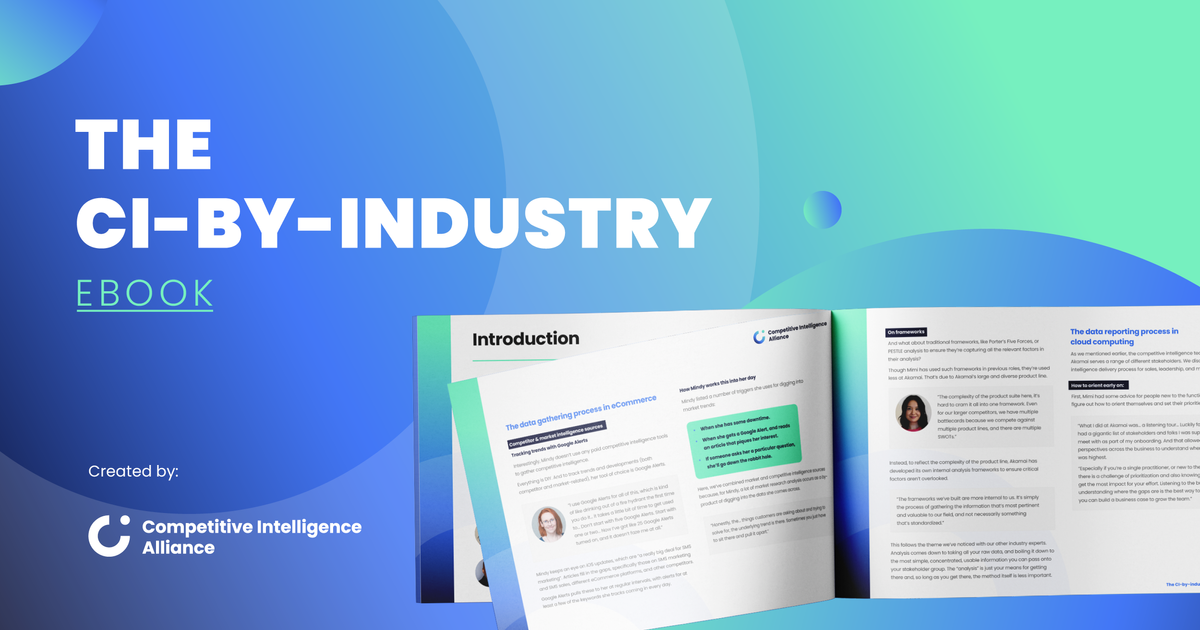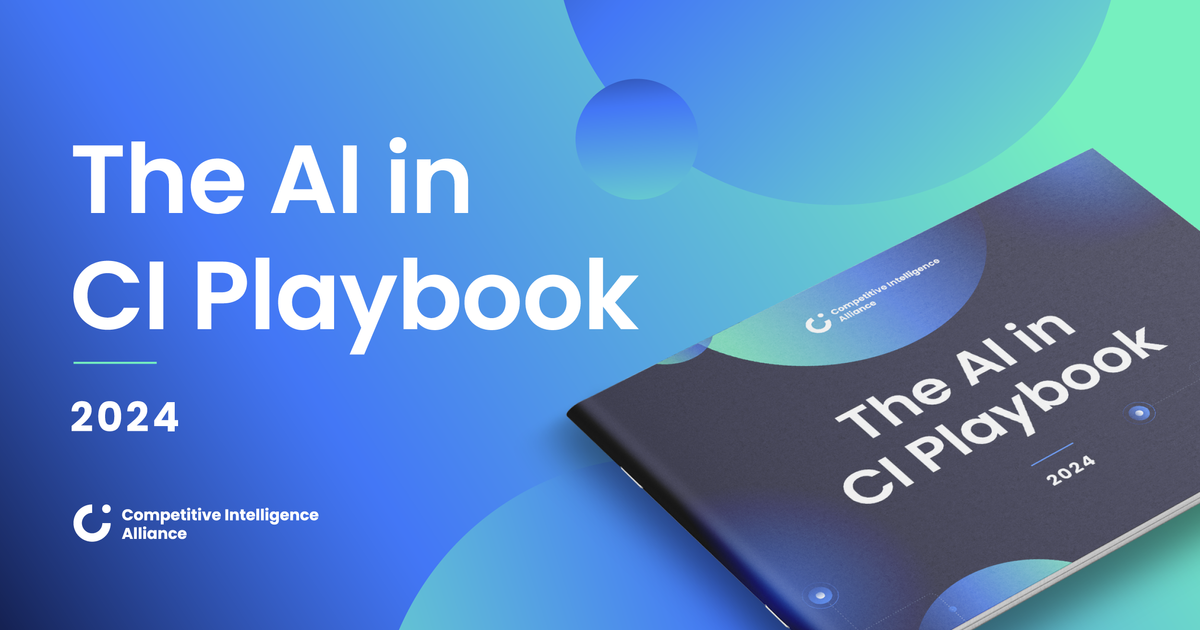Competitive intelligence (CI) professionals are facing an unprecedented volume of data and a rapidly changing competitive landscape. Across industries, from tech to retail, the need for real-time, accurate, and actionable insights has never been greater.
AI tools are now widely used across the CI landscape, building on the existing machine learning platforms and software repositories that have been around for years. With the rise of AI, many of these systems have added new features to improve workflows, making them more efficient and accurate.
This shift helps meet the increasing demands of both B2B and B2C markets, though there's still room for improvement.
This article explores how different categories of AI tools are helping CI professionals address common challenges, enhance sales enablement, and forecast future trends, while aligning these insights with strategic frameworks and best practices to ensure actionable and effective decision-making.
Use cases
AI tools have brought significant innovation to the way competitive intelligence is gathered, analyzed, and implemented. The effectiveness of these tools often depends on their alignment with specific use cases.
Below, we categorize AI tools based on common CI use cases and highlight how they help solve key challenges:
1. Real-time competitive and market surveillance
Real-time competitive intelligence tools allow CI professionals to track competitor activity, market movements, and industry changes as they happen. These tools help filter out the noise by curating the most relevant insights for the sales cycle.
However, the challenge lies in the sheer volume of data that can overwhelm sales teams, causing inefficiency. The best solution here is to prioritize data using role-specific dashboards, which present only actionable insights based on sales stage and relevance.
Strategic framework alignment:
Incorporating strategic frameworks like PESTEL Analysis and Porter’s Five Forces enhances the effectiveness of real-time intelligence tools. PESTEL helps organizations continuously assess external factors—such as political and technological changes—while tools monitor real-time developments, ensuring strategies remain adaptable.
Porter’s Five Forces complements this by tracking competitive rivalry and the threat of new entrants, providing a dynamic understanding of industry competition.
Additionally, frameworks like the OODA Loop (Observe, Orient, Decide, Act), a.k.a., continuous intelligence help observe and orient more effectively, improving decision-making speed in response to competitive moves, while SWOT Analysis supports teams to categorize intel and map them to action as they emerge from real-time data.
Together, these frameworks guide how to best respond to evolving market conditions and competitor trends, ensuring more strategic decision-making.
2. Competitor data aggregation and market mapping
Aggregating data from various sources into one platform is a significant advantage AI tools provide. These tools allow for better visualization of competitor relationships, market positioning, and trend emergence.
The challenge comes from data fragmentation, where information is spread across too many sources, making it difficult to form a unified view.
AI-powered data aggregation tools solve this by bringing all relevant data into one place, providing clarity and allowing CI professionals to focus on actionable insights instead of data collection.
Strategic framework alignment:AI-powered aggregation tools are essential for building a Competitive Positioning Matrix, enabling organizations to visualize where they stand relative to competitors in the market. By mapping out key players and their positioning, businesses can craft more informed strategies.
These tools also enhance Porter’s Value Chain analysis by offering insights into how competitors operate across different stages of their value chain, which helps refine a company’s own competitive advantage. In addition, tools that highlight trend emergence and market gaps are crucial in implementing a Blue Ocean Strategy, where the goal is to identify and explore untapped markets with less competition.
Lastly, Ecosystem Mapping benefits greatly from data aggregation by visualizing relationships between businesses, suppliers, partners, and technologies, helping organizations develop strategies that capitalize on ecosystem dynamics for sustained growth.

3. Social listening and sentiment analysis
Social listening tools track consumer/user/buyer sentiment and competitor brand mentions across social media and other digital channels. These tools help uncover insights into customer/end-user preferences and perceptions of competitors’ products and brands.
However, the reliability of user-generated content can vary greatly.
The key is to cross-validate these insights with verified sources such as industry reports or trusted publications and even internal experts. AI can be leveraged to filter out noise and highlight reliable trends that directly inform competitive positioning and customer engagement strategies.
Strategic framework alignment:
Social listening tools are instrumental in enhancing customer journey mapping by capturing real-time feedback from consumers at various touchpoints, helping businesses refine their customer experience strategies.
Additionally, these tools contribute to Brand Health Analysis by providing metrics that gauge brand strength and reputation, offering insights crucial for maintaining competitive positioning.
By integrating social sentiment data into Voice of the Customer (VoC) Programs, companies can leverage real-time feedback to improve products, services, and overall brand perception.
Furthermore, sentiment analysis can directly inform Net Promoter Score (NPS) calculations, enhancing customer loyalty and retention strategies by identifying customer pain points and satisfaction levels.
These frameworks ensure that social listening is not just about gathering data but about strategically applying the insights to improve customer experience and brand loyalty.
4. Sales and customer insights
In the B2B space, market research and insights tools are invaluable for understanding competitor tactics, customer behavior, and identifying high-value accounts.
One key challenge is the fragmentation of customer and competitor data across various systems, which complicates efforts to provide sales teams with a comprehensive view of each prospect. Additionally, the long and complex sales cycles in B2B require CI professionals to deliver timely, relevant insights throughout the sales process, ensuring that sales teams remain engaged with high-value prospects.
Aligning sales and marketing strategies is another ongoing challenge, particularly when both teams operate in silos. CI professionals must ensure that the intelligence they provide is used cohesively across the organization.
Finally, in complex industries, identifying high-value accounts can be difficult without a deep understanding of competitor activity and market trends.
CI tools can assist by integrating competitor data and market insights into customer segmentation models, helping sales teams focus on high-value accounts. These tools also track competitor activity in target accounts, providing real-time updates that help marketing and sales teams collaborate more effectively.
Additionally, predictive analytics from CI tools forecast competitor actions and market shifts, allowing sales teams to stay ahead of potential issues and keep prospects engaged throughout the sales funnel.
To overcome this, companies should develop structured playbooks that incorporate dynamic competitor profiles and real-time customer insights, ensuring tailored strategies for high-value accounts.
One should also incorporate role-playing scenarios that allow sales teams to practice applying these insights effectively during the sales cycle. These playbooks should be regularly updated with the latest CI and refined through role-playing exercises to ensure sales reps are fully equipped to win competitive deals.

Strategic framework alignment:
Customer value-based segmentation helps CI teams prioritize accounts by analyzing both internal engagement and external competitor dynamics. Aligning CI with Account-Based Marketing (ABM) ensures personalized, data-driven campaigns that reflect competitor behavior, fostering collaboration between marketing and sales.
Finally, customer journey mapping, enhanced by predictive CI, helps forecast account behaviors, enabling sales teams to address potential obstacles and maintain engagement with high-value prospects.
5. Predictive analytics and trend forecasting
Predictive analytics tools use AI to forecast future market movements, technological advancements, and competitor strategies.
These tools help CI professionals anticipate disruptions and prepare their organizations for potential challenges. However, reliance solely on AI models can be risky, especially when the data quality is not up to par.
To mitigate this, it’s best to combine AI-driven forecasts with human expertise, cross-verifying predictions with multiple data points. This approach ensures that the forecasts are both realistic and practical for strategic decision-making.
Strategic framework alignment:
Predictive analytics plays a crucial role in Scenario Planning, where organizations develop multiple possible future scenarios based on different market conditions. By leveraging AI-driven forecasts, businesses can plan for market shifts or disruptions and implement flexible strategies that adapt to different outcomes.
Furthermore, predictive tools align with Disruptive Innovation Theory by identifying emerging technologies and business models that could disrupt current markets, helping companies either prepare for these innovations or take the lead in driving them.
In terms of resource allocation, predictive analytics also supports the Growth-Share Matrix (BCG Matrix) by anticipating which products or markets are poised for growth or decline, ensuring strategic investments are well-targeted.
Lastly, Strategic Foresight is enhanced by predictive analytics, enabling companies to plan for long-term challenges and opportunities, ensuring that their strategies remain forward-looking and adaptable to future industry trends.
6. Sales alignment: Enablement and engagement supported by competitive intelligence
Sales alignment is key to ensuring sales teams can effectively leverage competitive insights in real time. Competitive Intelligence (CI) tools play a crucial role in both enabling sales teams and supporting engagement with high-value accounts.
CI empowers sales teams by delivering real-time intelligence on competitors and market dynamics, helping them position their solutions more effectively, handle objections, and engage strategically.
A common challenge, however, is the lack of alignment between CI teams and sales departments, where valuable insights often go underutilized or overlooked.
Sometimes, sales teams also lack access to up-to-date competitor information and struggle to apply these insights to their specific accounts, which can lead to missed opportunities.
Therefore, the focus here should be to establish structured feedback loops between CI and sales teams to ensure continuous updates on competitor activity. Developing joint competitive playbooks that integrate CI insights can help sales teams better understand their competitive landscape and tailor their engagement strategies.
Additionally, incorporating dynamic competitor profiling through AI-driven tools ensures sales teams receive real-time updates specific to the accounts they are working on.
These profiles provide actionable intelligence on competitor actions, industry shifts, and account-specific weaknesses.

Strategic framework alignment:
CI’s role in sales enablement is closely aligned with the Battle Cards Framework, where competitive intelligence is condensed into easily digestible insights on competitors. Battle cards equip sales teams with key differentiators, objection handling strategies, and product comparisons, helping them strategically position the company during prospect conversations.
CI also supports the Challenger Sale Framework, (teaching, tailoring, and taking control of sales conversation) where sales teams use market insights and competitor vulnerabilities to challenge a prospect’s existing thinking, positioning their solution as the best option.
Additionally, the SPIN Selling Framework (Situation, Problem, Implication, and Need-Payoff) is enhanced by CI, as intelligence on competitor offerings and market dynamics allows sales reps to ask pointed, solution-oriented questions.
Lastly, CI is critical for companies adopting Account-Based Selling (ABS) strategies, CI offers targeted intelligence on specific accounts and industry pressures, allowing sales teams to tailor their approach to each high-value account, improving conversion and retention rates.
Conclusion
Competitive intelligence is evolving to address challenges like data overload and misalignment with cross-functional teams. A holistic approach combining real-time intelligence, strategic frameworks, and best practices is a better way to turn data into actionable insights.
Rather than focusing solely on AI tools, CI professionals should align intelligence efforts with business goals and provide clarity on how to preempt or react to competitor actions, market shifts, and competitors’ customer behavior.
This integrated approach will enable agile decision-making and transform intelligence into a competitive advantage.
Want more on AI in competitive intelligence? Here's a playbook with all the answers you need to understand how modern AI tools are built, optimize prompts the right way, understand which CI tasks AI is best suited for, and so much more.









.png?v=4917c1c27c)